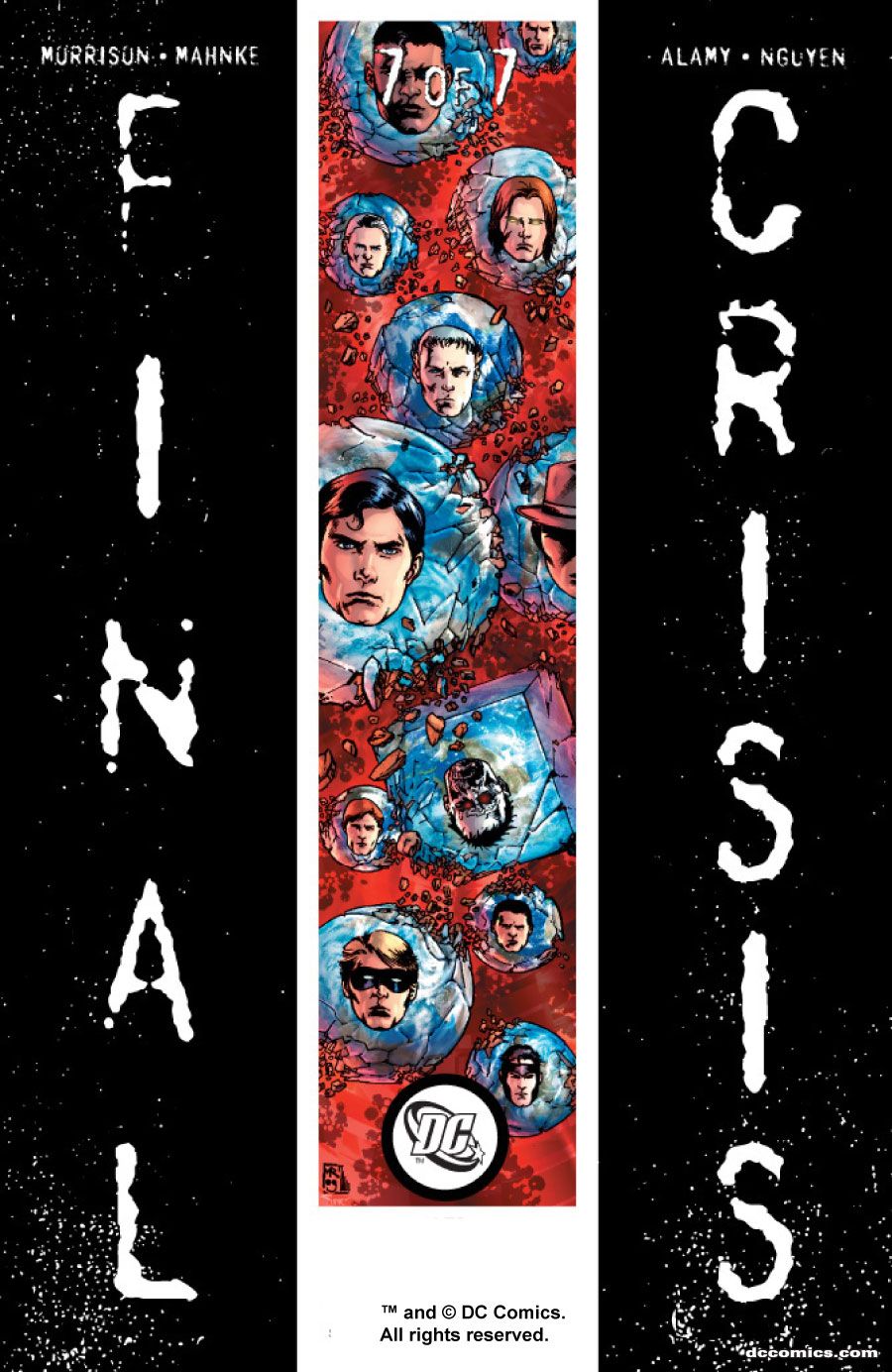In retrospect, the cave paintings on #1 were a dead giveaway.
For the past, what, eight months, in the wait between each issue of "Final Crisis" one could be forgiven for trying to read a whole lot into things. And to be sure, there is an enormous amount of subtext throughout the book, this issue in particular. But I'm referring more to the more continuity-centric questions. Which Earth will the DCU proper end up on? Who's going to represent who in the The Fifth World?
More than anything, though, "Final Crisis" has turned out to be about the weight and balance of opposites. Good versus Evil. Then versus Now. Old versus Young. Human versus Superhuman. Hope versus Cynicism. (Yes, we can suss that reference out, Grant.) While many questions are answered in the periphery -- What happened to Luther and Sivana? What about the new Lord Eye? What happens to Tawky Tawny's new tribe? -- the main focus of the book is examining how stories contribute to the understanding of the conflicts between these opposites; this story included.
As time collapses and Darkseid seems to have swallowed all existence save a small shard of DCU landmarks, the propelling narrative of the story suddenly slows. Everyone has gathered to build the Miracle Machine and it's unclear whether it's being done in seconds or months, but the sensation is that there's no hurry. Superman is seen examining blueprints, lounging in Metron's chair. It's an unexpectedly quiet moment in the midst of all the calamity that has come before. There's a lot unexpected about the final issue of the series. While it has been given the status of an event book simply by the fact of its scale, it has never adhered to its tropes too strongly. The multitude of epic acts we see in this issue -- the Green Lanterns resetting an entire Earth of the Multiverse with just the power of their rings just to pick one -- rarely take up more than a panel. They serve only as examples of the heroes' capability to casually accomplish the impossible.
This wide scale playing field, however, is a double edged sword that, in this issue more than any previous, ends up doing a lot of damage. The status of an event book means sticking to the schedule (at least loosely) of an event book. This meant that no matter what, "Final Crisis" #7 had to release before February. And that brought us to eight separate artists contributing to this issue. Doug Mahnke pencils the entire book (although it's hard to tell sometimes) with seven inkers (not including himself). At some moments, he replicates the best of his work in the previous issue. The scale and detail of the conflict is incredibly well rendered. Norm Rapmund shows some of his Phil Jimenez inking chops in a particularly inspired page detailing the (almost) final fate of the Super Young Team, Hawkman, and Hawkgirl. In others, though, the detail and precision just isn't there. Unfortunately, some great moments end up losing their intended impact. The Flashes reunions with their families, the final fate of Kamandi, and Nix Uotan's conference with the rest of the Monitors all could have benefited from a more detailed and subtle approach. While two other colorists lent Alex Sinclair a hand with finishing work on the book, you'd certainly be hard pressed to tell, as the coloring is consistently excellent throughout.
But overall, the benefits of this scope far outweigh its costs. Morrison is able to examine many of the common themes in his work in an arena few would have expected. While its hard to really pinpoint what will emerge from this event as the real game changer (maybe that the world now knows of the Multiverse?), none of that really has a significant impact on the self-contained story that's been told. (Well, let's just say "Self Contained If You Include 'Superman Beyond' And Those Two Issues Of 'Batman'.") With a cast of probably billions, and set pieces from every corner of the DC Universe, the story told here isn't about usurping the status quo, really, even though an entirely new Fifth World emerges from the rubble of this calamity. More important to the author is the idea of potential. Imagination is about the potential for something new. Heroism is about the potential for something good. And being alive, naturally, has always been about the potential for being dead. In ways both broad and starkly intimate, "Final Crisis" focuses on the balance of scales between these things above all else.
It's remarkable that DC set aside all this room, pushed so much stuff out of the way, just to let Grant Morrison tell a story about how awesome human beings are. But god bless them. I'm sure they've caught quite a bit of flack for it, and perhaps it was disingenuous to claim that a fundamentally simple, sad and sweet story about hope in the face of complete despair would somehow end up in the same vein as "Invasion!" or "Zero Hour." Really, "Final Crisis", in the space of its own text, corporate hyperbole aside, never claimed to be anything more than what it ended up as: a story with a happy ending about what it takes to get one.

